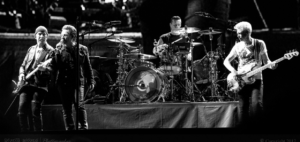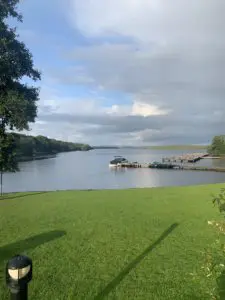Seanchaí: Unveiling the Rich Tapestry of Irish Oral Storytelling
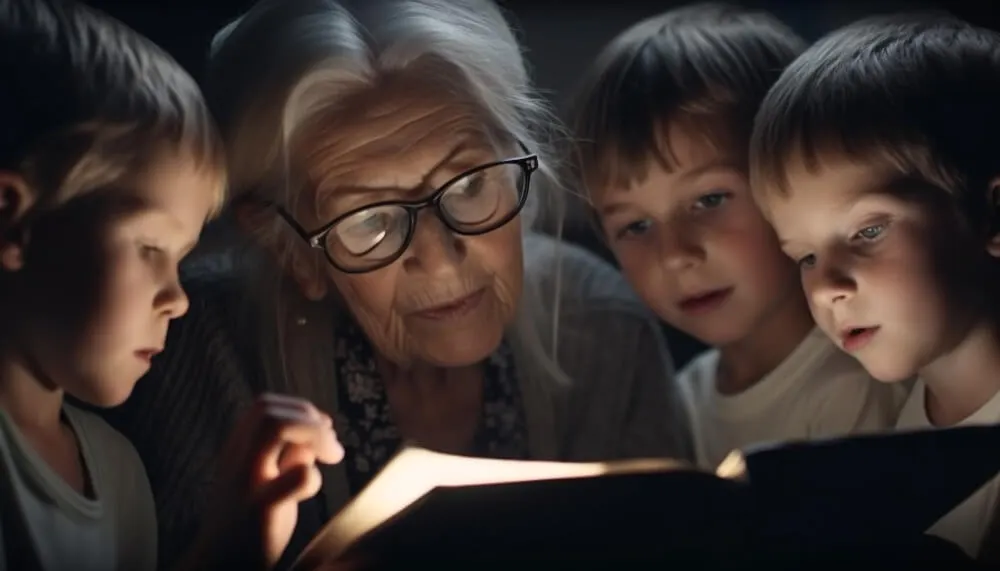
Updated On: April 22, 2024 by Yasmin Elwan
The Seanchaí held a pivotal role in Irish culture, serving as the custodians of Irish oral storytelling. These traditional storytellers were revered within their communities, passing down tales saturated with the essence of Irish heritage. Their narratives spun through generations and encompassed a variety of themes, from grand mythological sagas and local folklore to historical events and genealogies. The Seanchaí’s craft was more than mere entertainment; it was a respected oral archive and an intrinsic part of keeping the culture alive.
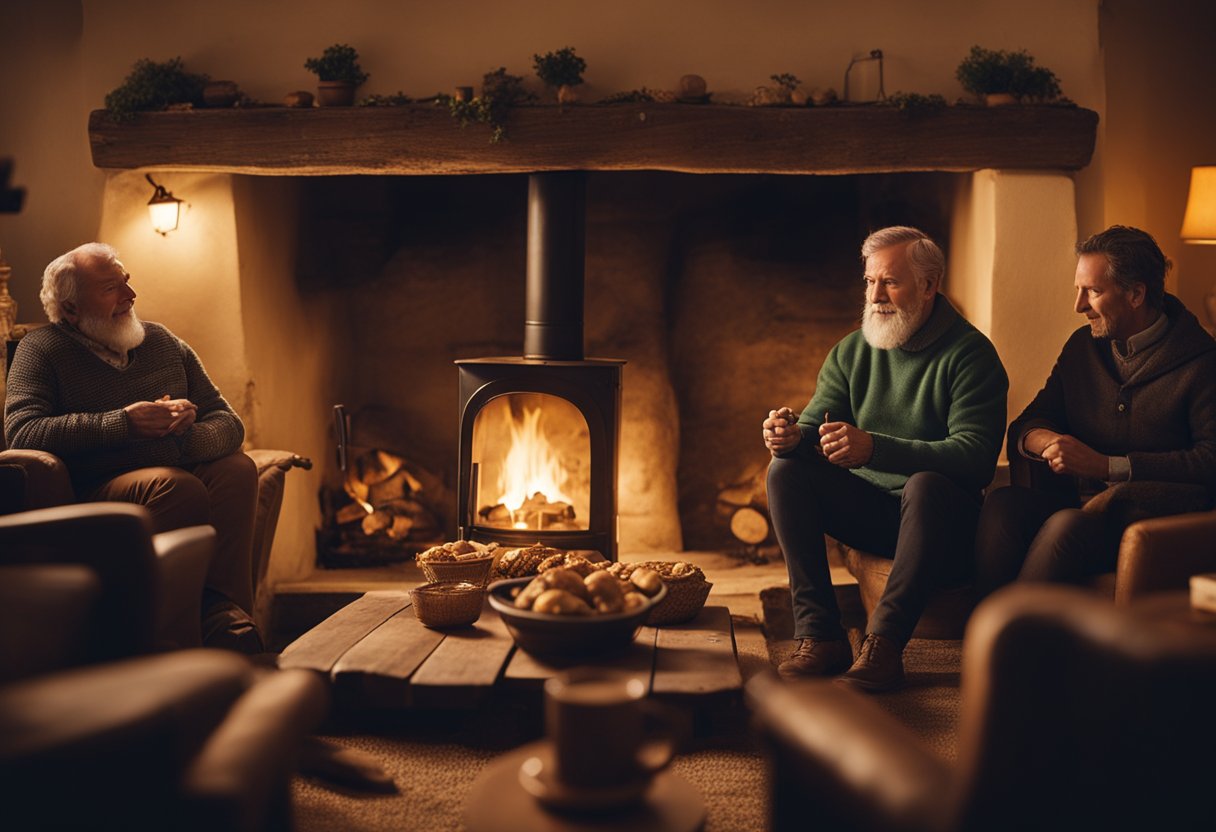
The legacy of the Seanchaí is deeply woven into the social fabric of Ireland. Their skill in captivating audiences ensured that the essence of Irish culture was not lost through time. Beyond storytelling, the Seanchaí were often educators and advisors, revealing the wisdom and values of society within their tales. As the world moves towards digital and written media, the resonance of the oral tradition endures, influencing contemporary literature and arts while also facing unique modern challenges.
Historical Roots of Seanchaí
The craft of the Seanchaí is deeply woven into the tapestry of Ireland’s cultural heritage. Our exploration begins with the ancient origins and the esteemed roles they upheld in Gaelic society.
Ancient Storytelling in Gaelic Ireland
In the misty epochs of Ancient Ireland, storytelling was much more than entertainment; it was a vital part of preserving history and oral tradition. Before the written word was commonplace, these tales vividly captured the essence of our ancestors’ lives, beliefs, and the world around them. Bards, who were poets and storytellers, played a pivotal role in this tradition, traversing the lands to recount epic tales of heroes and history, thus shaping early Irish literature.
The Gaelic Ireland narrative landscape was rich and variegated, with each story reflecting the intricate patchwork of society and the natural environment. Our monks later took on the mantle, transcribing these sagas into manuscripts, ensuring that this oral wealth was not lost to the sands of time.
Roles of Bards and Seanchaithe
Bards and Seanchaithe (plural for Seanchaí) were revered in Gaelic culture, renowned for their powerful memory and oratory skills. The bards were often attached to the courts of chieftains, where they held the exalted position of storytelling specialists and were tasked with creating and reciting poetry that captured the deeds of their patrons. These poets were integral to education and the maintainers of legal matters, alongside their narrative duties.
The Seanchaithe, on the other hand, were the custodians of oral tradition, charged with memorising extensive genealogies and complex lore. Their role transcended mere entertainment; they were historians, educators, and moralists, using their narratives to pass on knowledge and values. They commanded immense respect, and their words carried the weight of both history and the cultural identity of the people. They were the living repositories of our nation’s soul, ensuring continuity and coherence in a constantly evolving society.
The Art and Craft of the Irish Oral Storytelling
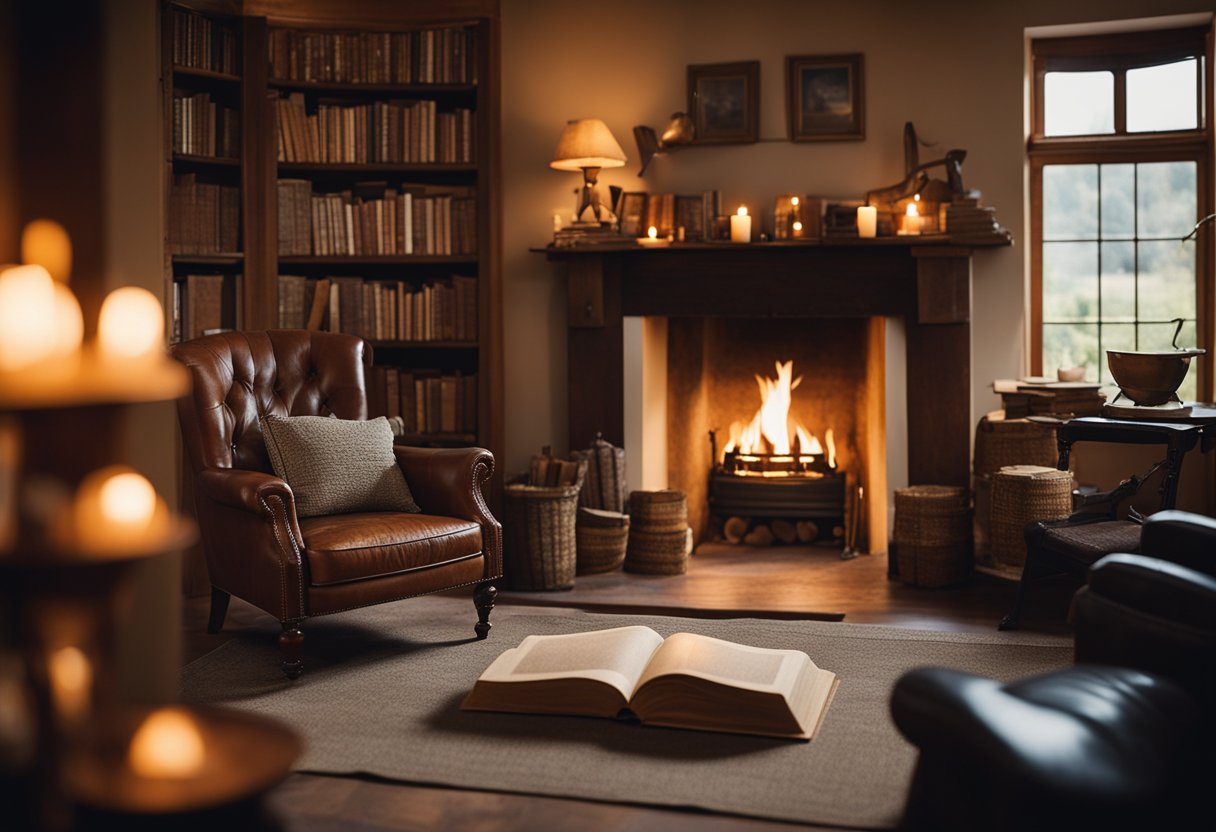
The seanchaí, Ireland’s traditional custodians of folklore, possessed an unparalleled mastery of the art of storytelling. Their skill lay not only in the tales they spun but in the powerful delivery that captivated their audiences.
Language and Expression
The seanchaí’s command of language was fundamental to their storytelling. They employed a rich vocabulary and a lyrical cadence that resonated with the rhythm of Irish life. The deft use of Gaeilge, the Irish language, added depth and authenticity, evoking the spirit of the tales they told. The language was the seanchaí’s palette, and they painted vivid images with their words, often weaving in proverbs and sayings that reinforced the moral and resonance of each story.
Techniques and Performance
In the realm of performance, seanchaí was unrivalled. Their voice, an evocative instrument, would rise and fall with the drama of the narrative; the power of a whisper could command as much attention as a roar. In the gestures, the subtle or grand, the seanchaí’s stories were rooted in the physical world. As they recounted battles or tender moments, their hands and expressions brought the scenes to life before the listener’s eyes.
The art of the seanchaí was not merely a performance; it was a living, breathing retelling of Ireland’s cultural heritage, ensuring each generation could almost hear the crackle of the hearth and feel the thrum of the land in the stories that were so deftly shared.
Themes and Content of Stories
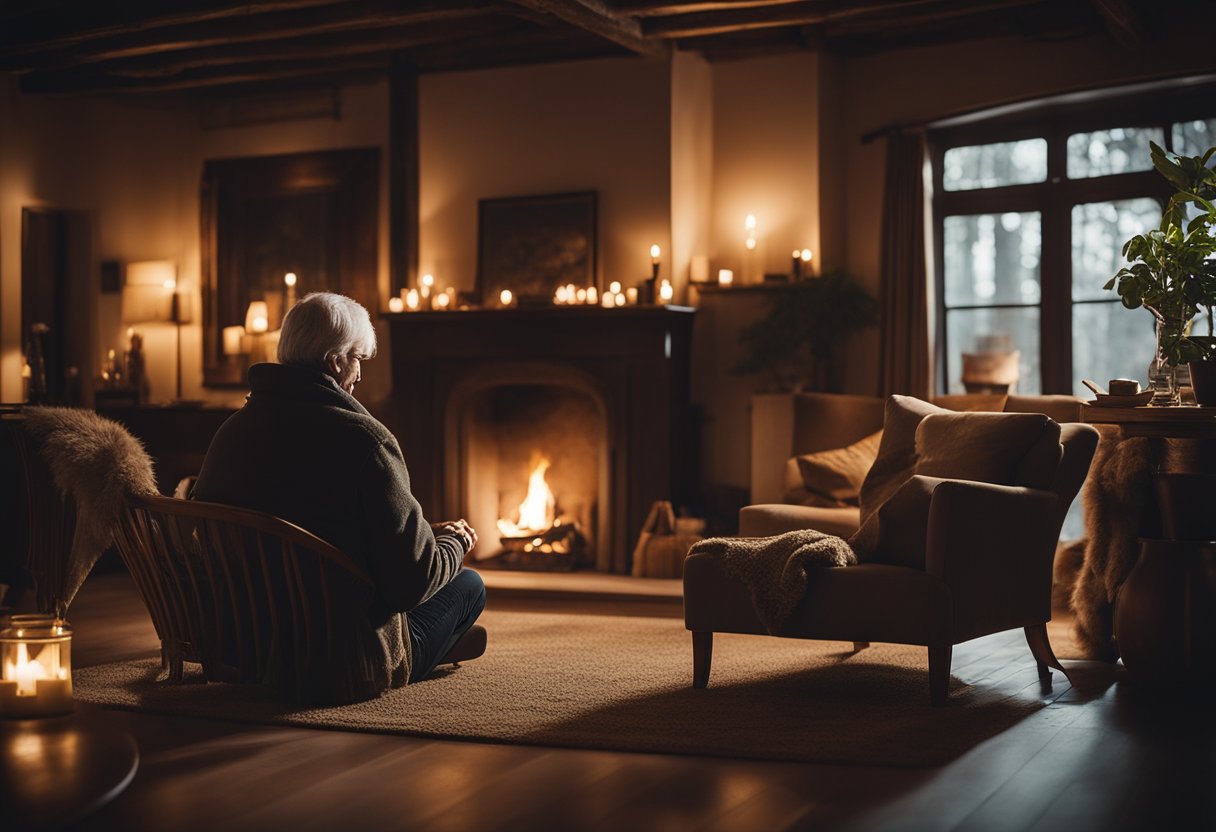
In the rich tapestry of Irish oral traditions, the seanchaí would masterfully weave stories encompassing everything from the mythological roots of the Emerald Isle to parables brimming with wisdom and morality. Our ancestral narratives are a profound reflection of Ireland’s historic culture and society.
Mythology and Ancient Lore
The stories spun by the Seanchai often traced their origins to the mythological cycle of ancient Irish lore, where deities and supernatural beings walked amongst the keenly spiritual ancient Irish. Legends dating back to the Ulster and Fenian cycles depicted a world of heroes such as Cú Chulainn and Fionn mac Cumhaill, figures whose extraordinary feats still resonate in our cultural memory. These tales delved into the heart of Ireland’s identity, capturing the collective imagination with each passing generation.
Tales of Wisdom and Morality
Parallel to the fantastical sagas, seanchai imparted tales of wisdom and morality that held significant social functions, educating and instilling values within the community. These stories were a tapestry woven from daily life and tradition, reflecting on themes such as honour, loyalty, and the complexities of the human condition, which often mirrored the societal norms and challenges of the cycle of the kings. Through these narratives, the seanchaí instilled lessons that underpinned the moral fabric of Irish society, their teachings as relevant today as they were centuries ago.
Cultural Significance and Societal Impact
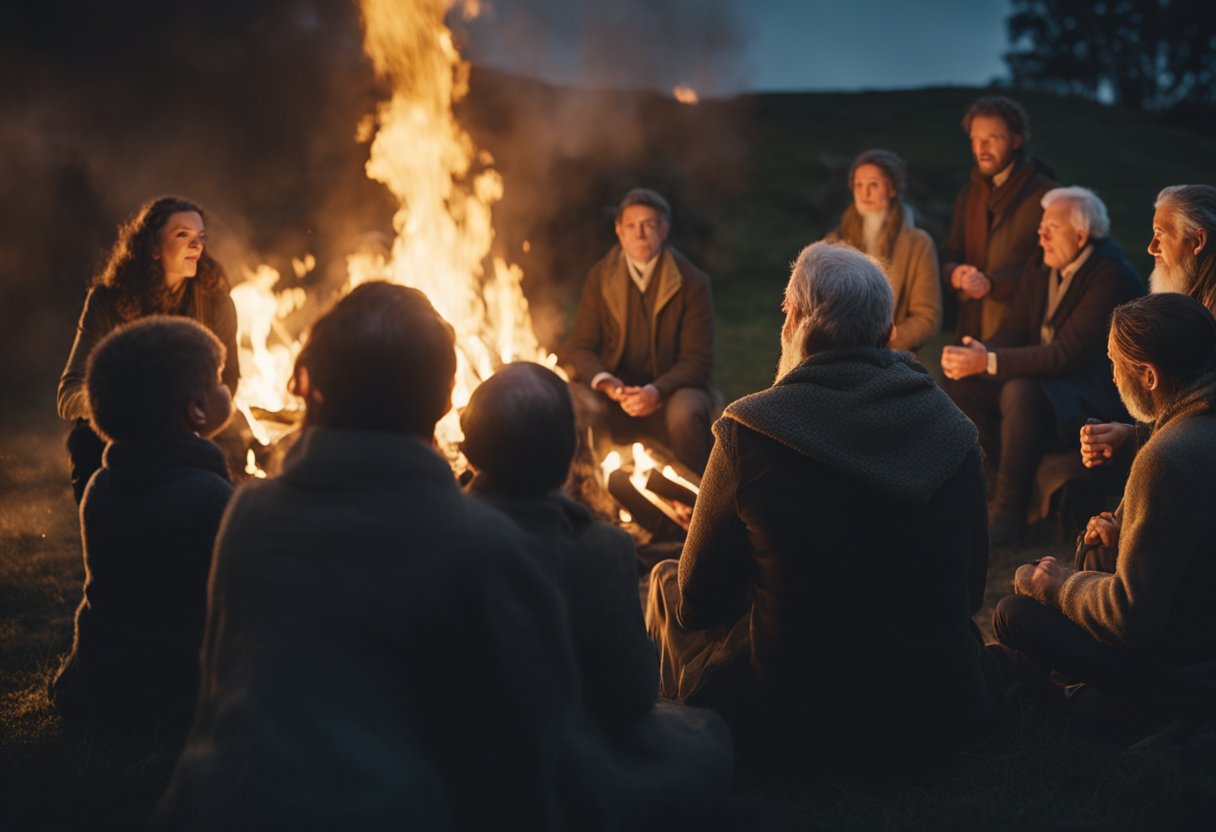
The Seanchaí bear an essential role in preserving the cultural tapestry of Ireland, serving as the revered guardians of our heritage and playing a crucial part in strengthening the communal identity.
Seanchaí as Custodians of Heritage
Seanchaí, the esteemed storytellers of Ireland, have been the keepers of Gaelic culture for generations. It’s through their detailed narratives that our history breathes life, fostering a profound connection between the Irish people and their past. With each tale, they secure the continuation of our heritage, safeguarding traditions that may otherwise have slipped into the shadows of time. For us, these storytellers are more than mere narrators; they are the stewards of the legacy of Celtic culture, clad in the rich fabric of myth and history.
Storytelling and Community Identity
Community and identity in Irish society are deeply intertwined with the tales spun by the Seanchaí. These stories, steeped in both the ordinary and the supernatural, resonate within the community, cultivating a sense of belonging and unity. Through the voice of the Seanchaí, the essence of Irish culture and tradition is conveyed, reinforcing the bond among community members across generations. Thus, the role of the Seanchaí transcends entertainment; it is a pivotal societal function that nurtures the collective identity of the community, instilling pride in our Gaelic heritage and reinforcing the fabric of society.
Evolution and Transformation
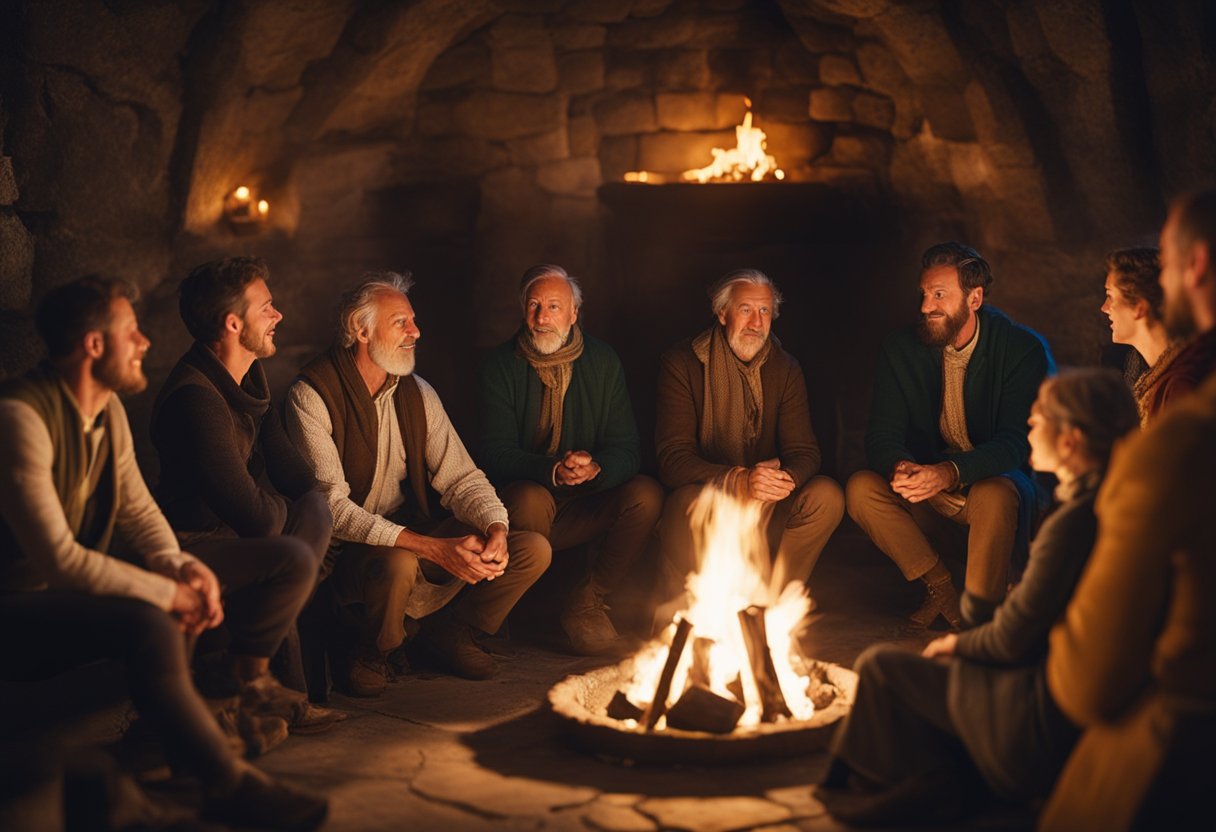
The art of Irish storytelling, or Seanchaí, has experienced a significant metamorphosis, transitioning from its oral roots to written records and embracing modern platforms to ensure the longevity and vibrancy of this cherished practice.
From Oral to Written
Historically, Seanchaí preserved the folklore and historical narratives of Ireland purely through spoken word. Their stories were a cornerstone of Irish culture, encapsulating mythology, history, and moral lessons. As we moved towards a more literary society, these oral tales found their way onto paper, solidifying them in the annals of Irish literature. This transition has been instrumental in preserving the tales for future generations, protecting their essence against the erosion of memory. Books play a crucial role in this conservation, creating a tangible record of stories that were once fleetingly woven through the Irish consciousness with each telling.
Modern Expressions of Seanchaí
Modern technology casts a wide net, capturing traditional storytelling and evolving it into various forms like film, television, and radio. These mediums have taken the core elements of Irish storytelling and repackaged them in ways that resonate with contemporary audiences. Our Seanchaí traditions now extend beyond live recitations; they are expressed through technological advancements that allow stories to be shared globally, reaching an audience wider than ever before. This ensures the survival and relevance of our storytelling tradition, adapting it to the pace and preferences of today’s society while keeping the spirit of the Seanchaí alive.
Influence on Irish Literature and Arts
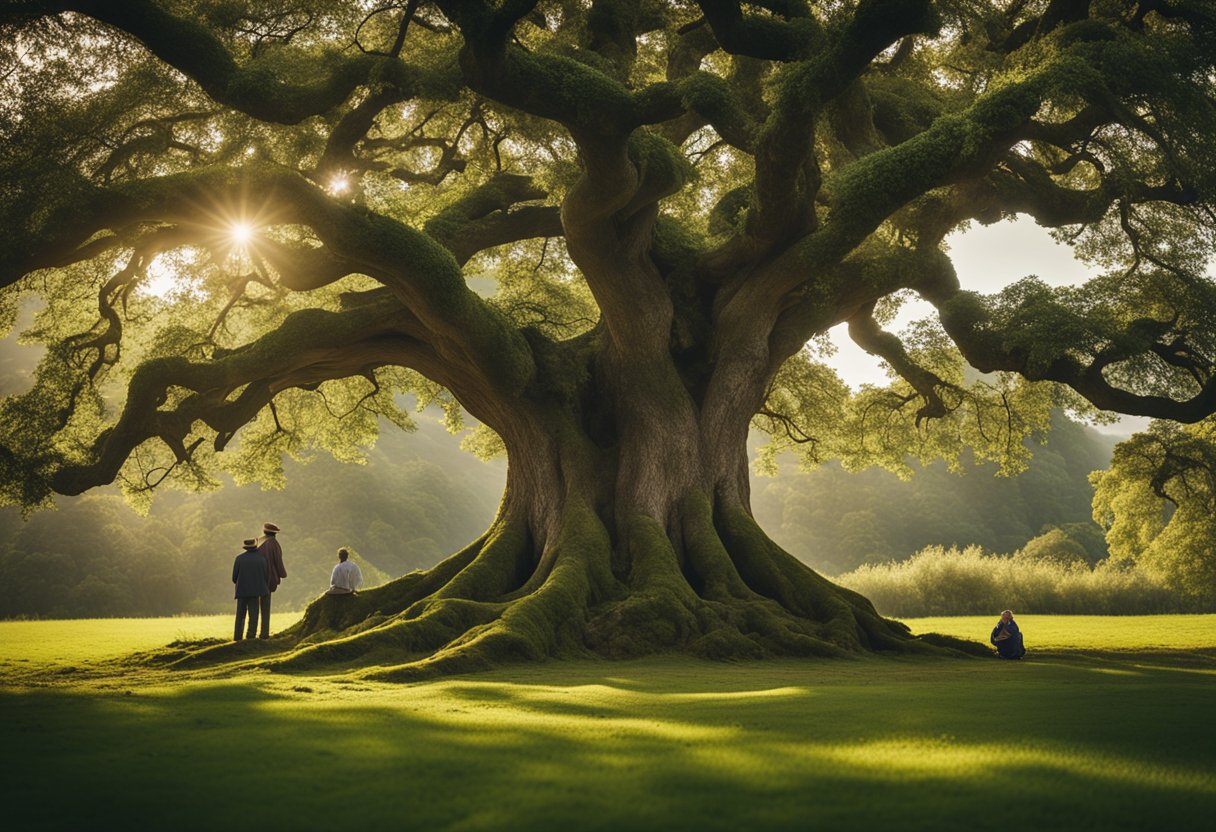
At the very heart of Irish culture, the Seanchaí has long been revered as custodians of an oral tradition that has profoundly shaped our literature and arts. Weaving tales that span from the mystical realms of myth to the stark reality of historical events, they have left an indelible mark on the creative expressions within our nation.
Influence on Poetry and Prose
The Seanchaí’s art has been instrumental in nurturing a narrative style rich in imagination, wit, and eloquence across Irish literature. Stories have transitioned from spoken word to written form, infusing books with the lyrical cadence and vibrant imagery native to the oral tradition. The impact is particularly evident in Irish poetry, where the rhythmic and narrative style owes much to the Seanchaí’s techniques. The narrative voice in Irish prose is often reflective of this tradition, employing a conversational tone and distinctive use of language that can be traced back to the Seanchaí’s influence.
Seanchaí in Music and Film
Within Irish music, the Seanchaí’s legacy resonates through ballads and folk tunes that recount tales of yore. These musical stories encapsulate the spirit of Irish culture, showcasing a nation’s identity through melody and lyrics. Similarly, in film, the oral tradition has greatly enriched Irish cinematic storytelling, creating narratives that are compelling and imbued with the depth of our folklore. Directors often draw upon Seanchaí’s style for structuring narratives, evoking the same intimate connection that a storyteller would achieve around a fireside.
Notable Seanchaís and Their Legacies
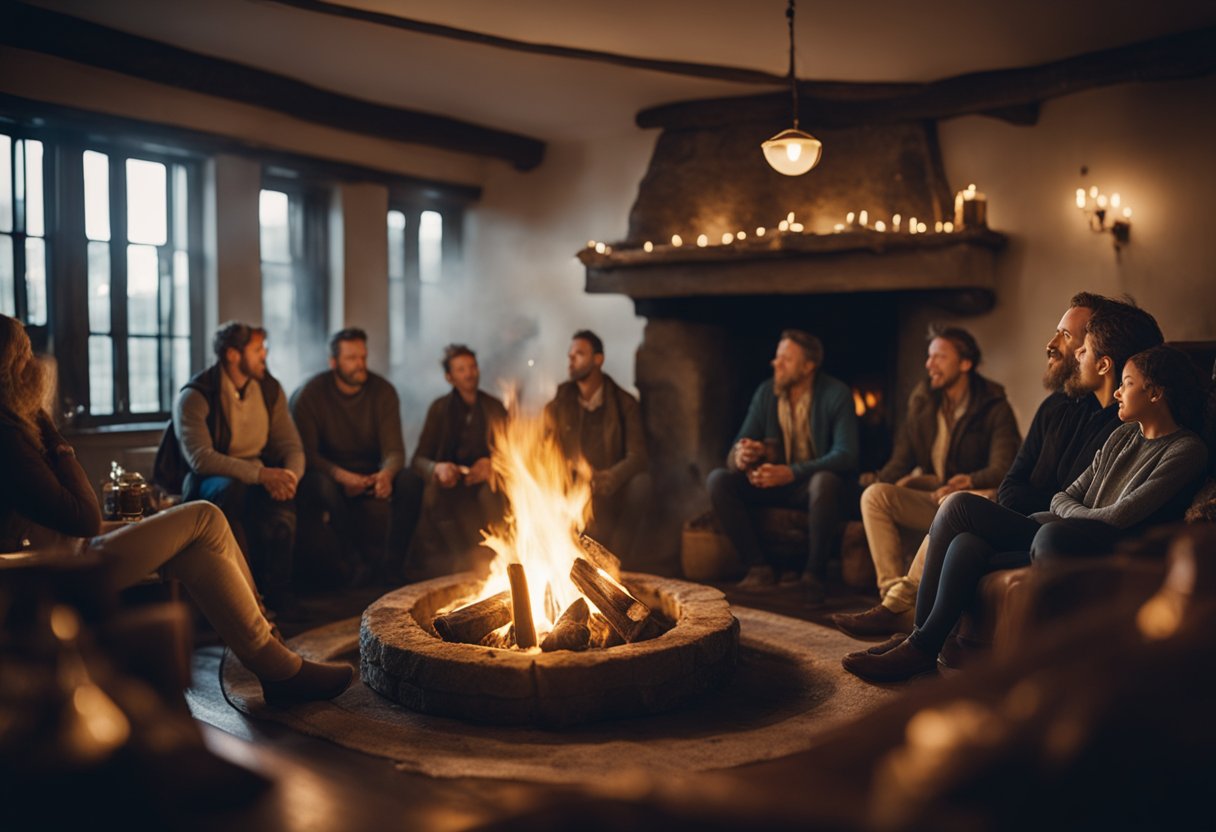
Seanchaís, traditional Irish storytellers, have preserved Ireland’s rich historical and cultural narratives through oral tradition. They played a crucial role in maintaining the lineage of Irish folklore, with some individuals standing out for their contribution to this enduring legacy.
Eamon Kelly
Eamon Kelly, revered as the master storyteller, contributed significantly to the revival of the Seanchaí tradition in the 20th century. With his enchanting performances, he brought the tales of old Ireland to a contemporary audience, preserving the oral heritage through television, radio, and live performances alike. Kelly’s legacy is a blend of storytelling prowess and cultural preservation that solidified the seanchaí’s place in Ireland’s national identity.
Peig Sayers and Other Icons
Peig Sayers represents another beacon of the Seanchaí tradition, her stories often depicting the harsh realities of island life on the Blasket Islands. Her accounts, alongside those by other icons such as Eddie Lenihan and Nuala Hayes, provide a direct lineage to Ireland’s past. Historians regard these narrative accounts as invaluable, with their ability to animate history and tradition otherwise frozen in time. The impact of these storytellers extends beyond entertainment, offering insights into the social and cultural fabric of Ireland.
Seanchaí in Education and Preservation
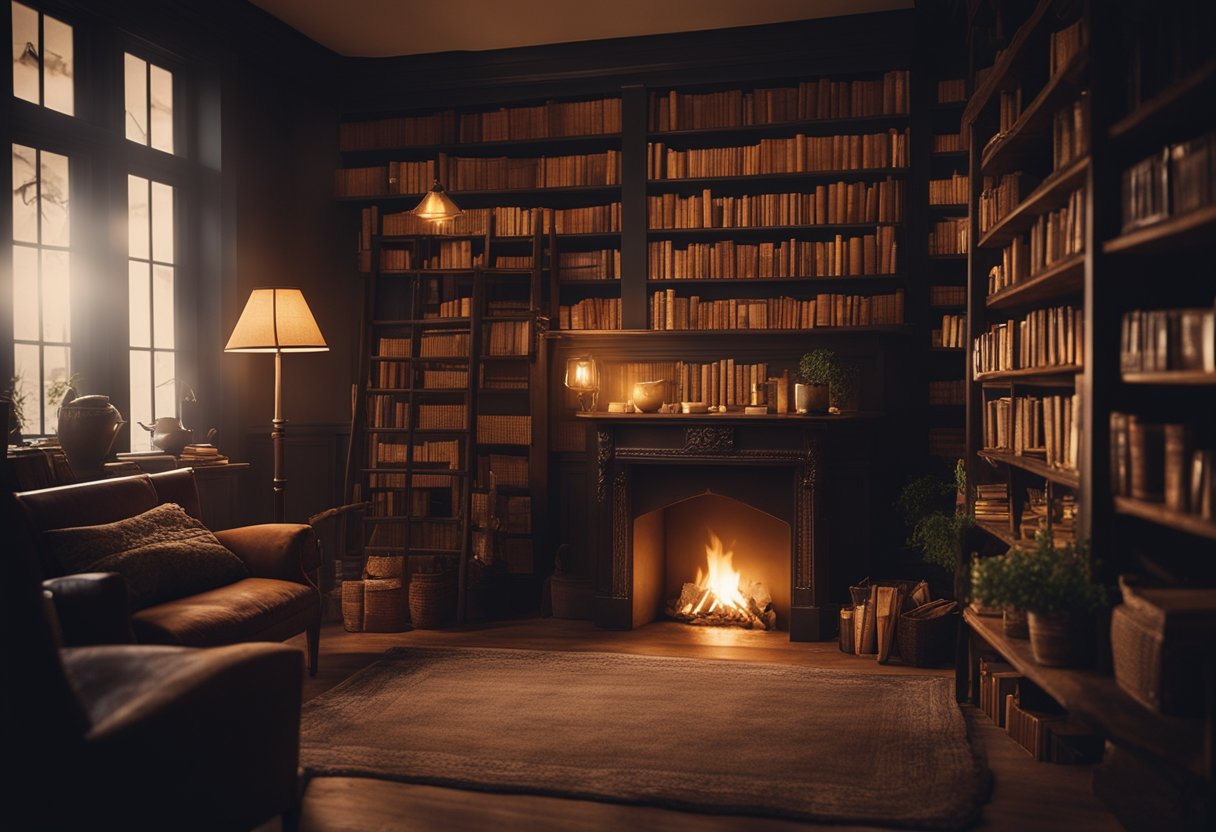
Seanchaí, as custodians of Ireland’s rich oral heritage, holds a crucial role in the education and preservation of Gaelic culture. Through storytelling, they impart historical narratives and folk traditions to new generations.
Teaching the Tradition
We recognise the importance of teaching the tradition of the Seanchaí to further the revival of this storied craft. Educational programmes and storytelling workshops, often sponsored by Irish cultural organisations, are vital in passing on the skills and tales of the Seanchaí. In schools, this process not only enriches the curriculum but also ensures that the intangible heritage of Gaelic Ireland remains a living tradition.
- Education: Storytelling modules are integrated into school syllabi.
- Revival: Efforts to reignite interest in Seanchaí are gaining momentum.
- Gaelic Ireland: The historical and cultural context of the stories is emphasised.
Festivals and Schools
Festivals play a significant role in preserving Seanchaí tradition by providing platforms for storytellers of Ireland to perform and share their art. Events such as the spirit of folklore festivals draw crowds, fostering a community interested in the oral storytelling heritage. Schools collaborate with festivals to expose students to Seanchaí, ensuring that the heritage is not confined to the classroom.
- Festivals: Celebrations of tales and the art of storytelling.
- Schools: Partnership with festivals to facilitate live storytelling.
- Irish Examiner: Coverage of such events promotes broader public engagement.
Geographical Spread and Adaptation
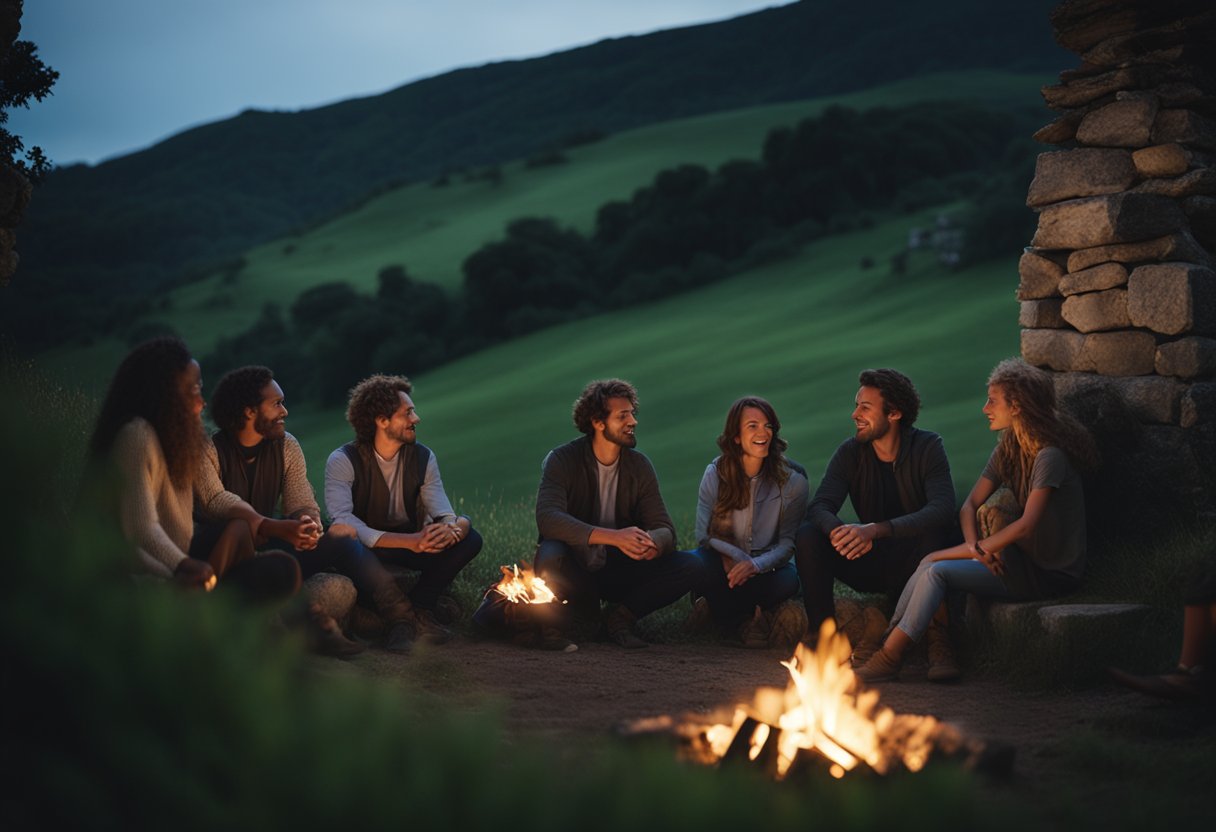
The spread of the Seanchaí tradition and its adaptation reflect the dynamism of Irish culture from rural townlands to the global stage.
From Town to Town in Ireland
In the heartlands of Ireland, from the rugged landscapes of Galway to the historical alleys of Dublin, the Seanchaí moved, spinning tales that wove together the threads of tradition and community. The Gaeltacht regions, where Gaelic is vibrantly preserved, have remained critical in keeping this oral tradition alive. These areas provided a fertile ground for the Seanchaí, enabling them to pass down stories and ensure that the voices of Irish people echoed through generations.
The Irish Diaspora and Global Influence
With the scattering of Irish people across the globe, particularly to America, the art of Irish storytelling adapted, finding new homes and audiences. The tales of the Seanchaí transcended boundaries, capturing the imagination of diverse cultures and embedding themselves within Irish communities abroad. This migration allowed for a fascinating blend of traditional Irish storytelling with the varied cultural backgrounds found in different corners of the world.
Contemporary Challenges and Opportunities
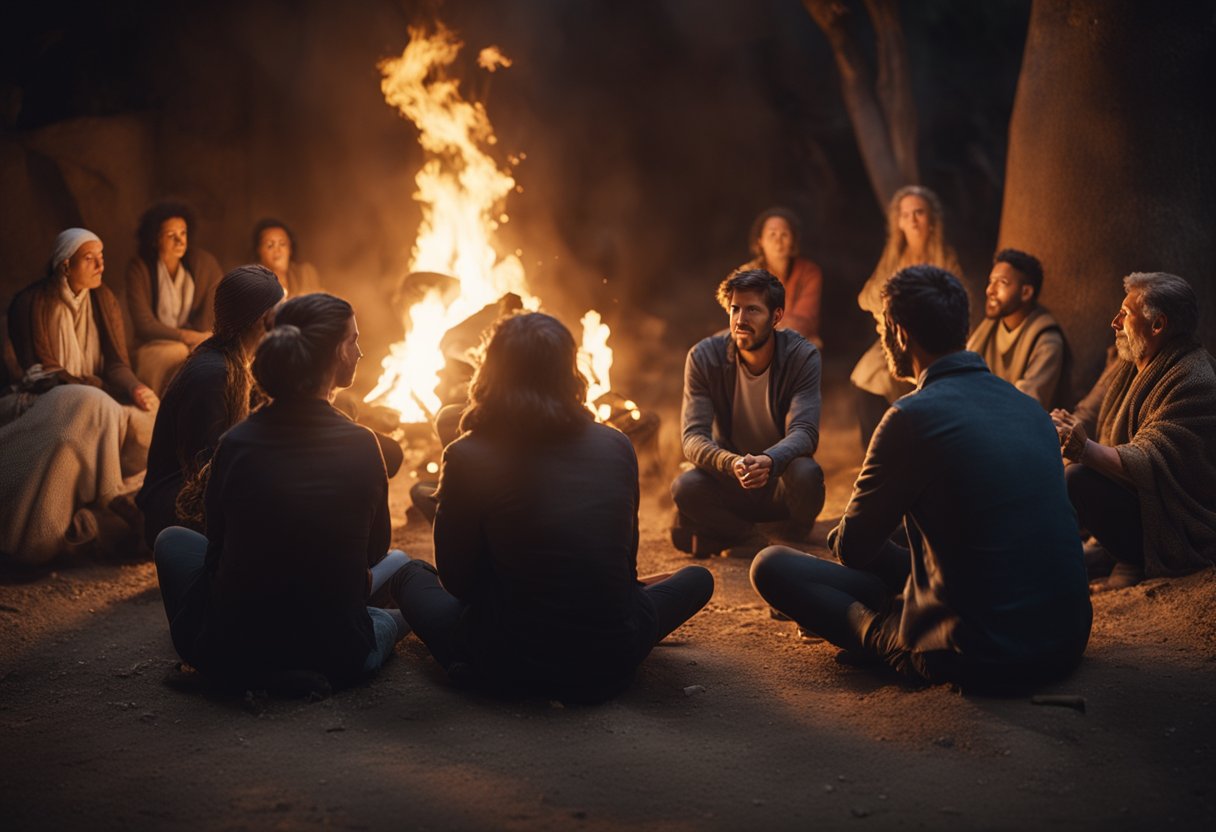
In the arena of Irish oral storytelling, the Seanchaí tradition faces the duality of staying relevant in a rapidly evolving cultural landscape while also benefiting from new avenues of technology and media.
Maintaining Relevance
For us, the preservation of the Seanchaí’s role as the ‘Google of ancient times’ poses a significant challenge. In an age where entertainment is heavily dominated by television and online streaming, the intimate community-based storytelling that defines the Seanchaí faces stiff competition—risking loss of engagement, especially among younger generations. The effort to keep this tradition alive thus becomes a balancing act, embracing new narratives that resonate with lives in modern times while safeguarding the authenticity of the cultural treasure trove, which is the oral heritage.
New Platforms and Media
Contrastingly, the expansion of technology presents unprecedented opportunities. Digital platforms offer Seanchaí storytelling a chance for a revival, propelling these storied narratives from local hearths to global audiences. Utilising social media, podcasts, and video content, the Seanchaí’s lore can find continuity and interactive space in the digital realm, establishing a vibrant community of listeners and storytellers alike.
By integrating the Seanchaí tradition with current modes of communication, we strive to weave threads of the past into the fabric of the present, ensuring that the voice of the Seanchaí remains an influential echo in the chorus of contemporary culture.
Frequently Asked Questions
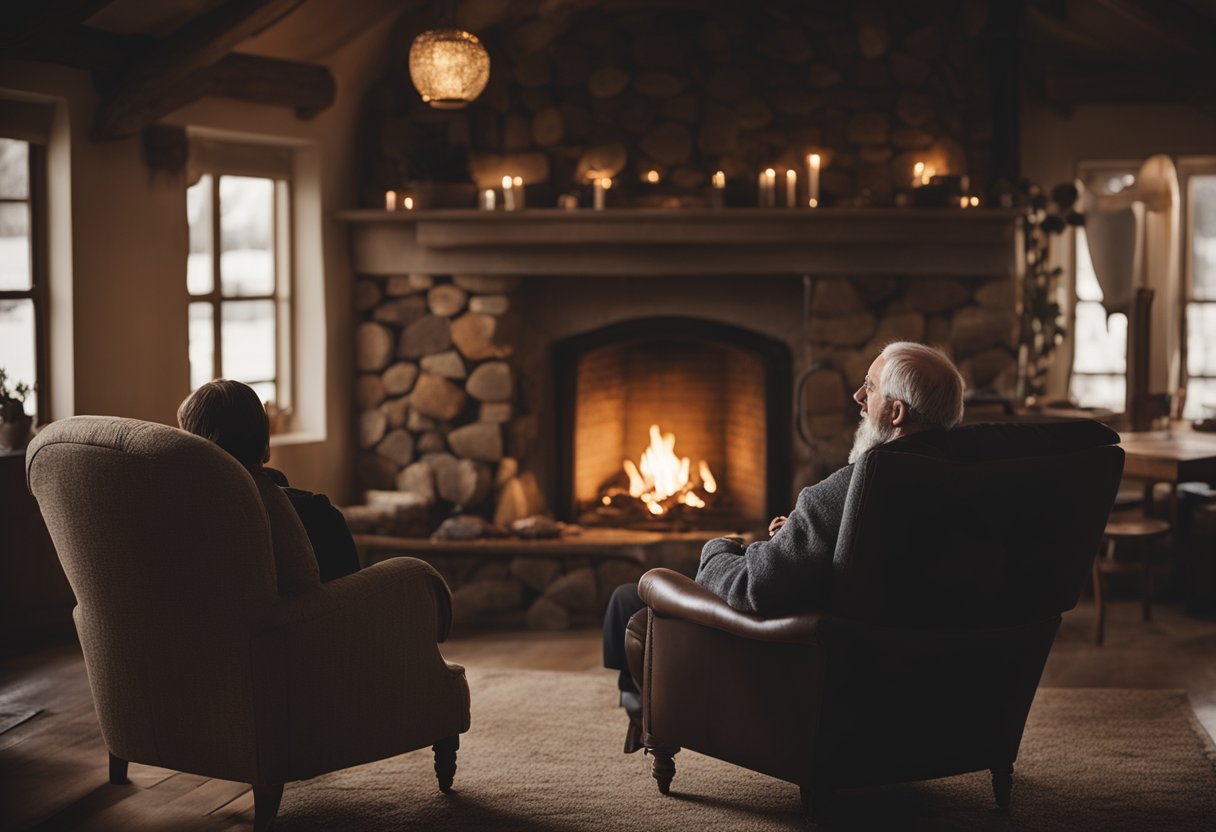
In this section, we’ll answer some of the most common queries about the Seanchaí and the unique place they hold in the tapestry of Irish culture.
What roles do seanchai play in Irish culture?
Seanchaithe is pivotal to celebrating Ireland’s oral history. They are not merely storytellers but also custodians of the nation’s past, preserving and conveying ancient myths, folklore, and local histories through the generations.
How is the tradition of seanchaí maintained in modern Ireland?
The tradition of the Seanchaí is nurtured today through formal and informal gatherings, storytelling events, and educational formats. Cultural initiatives and heritage projects often engage Seanchaithe to ensure this oral tradition remains vibrant and accessible.
Could you explain how the art of seanchaí differs from other storytelling traditions?
The seanchaí tradition is marked by its reliance on memory and the personal flair of the storyteller. Unlike other traditions, which may use books or props, Seanchaithe weave tales using evocative language and performative elements unique to the Irish oral tradition.
What are the key characteristics of stories typically told by a seanchaí?
The stories recounted by Seanchaithe often feature elements of mythology, heroic deeds, and moral lessons. They’re rich in character and landscape detail, revealing a deep connection between the Irish people and their land.
In what settings would a seanchaí traditionally perform?
Historically, a Seanchaí would perform in a communal setting like a crossroads, pub, or during social gatherings at someone’s home. It was an integral part of communal life, where stories were shared for education and entertainment.
How do contemporary seanchai balance traditional methods with modern storytelling techniques?
Today’s Seanchaithe balances tradition by blending the time-honoured oral narratives with contemporary mediums such as radio, podcasts, and online platforms. They honour the essence of the Seanchaí while ensuring the art form evolves with the times.


